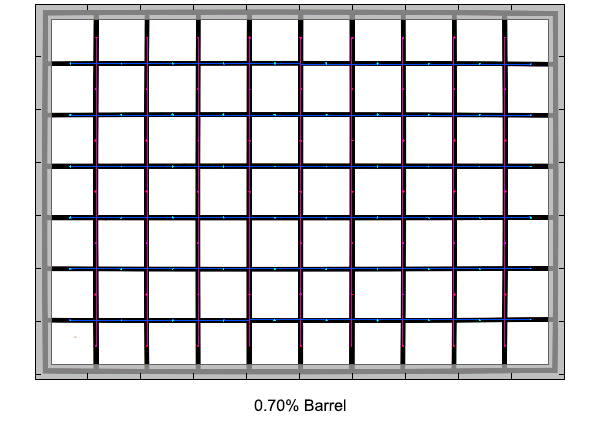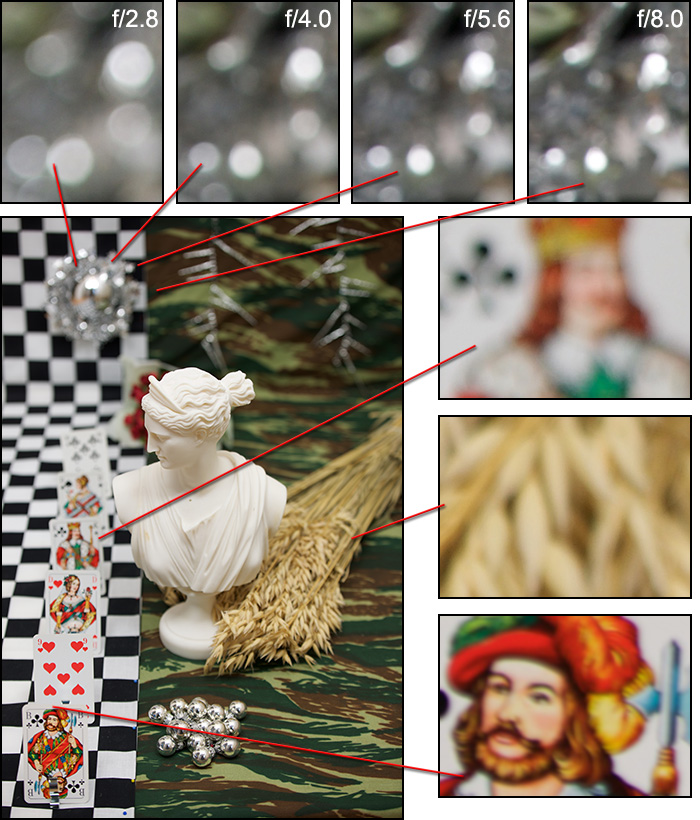|
Page 2 of 3

Distortion
The lens shows typical distortion behaviour, with barrel type distortion at the short end, switching to pincushion distortion at longer focal lengths. The actual amounts are fairly low, though less than most competitors.
|
Move the mouse cursor over the focal length text marks below to observe the respective distortions
|
| 70mm |
135mm |
200mm |
|

|
The chart above has a real-world size of about 120x80cm.
Vignetting
As to be expected from such a fast lens, the Tamron shows some vignetting of around 0.8 EV wide open throughout the zoom range. As usual, stopping down reduces the amount of light fall-off and from f/4 onwards it shouldn't be an issue anymore for most subjects.
We're performing our vignetting analysis based on
(uncorrected) JPEGs straight from the camera. The JPG engine of the Nikon D3x features a rather flat
gradation curve, thus has a moderate contrast characteristic, resulting in comparatively low vignetting figures - the
corresponding Canon figures are roughly 40% higher due to the more
aggressive default contrast setting.

MTF (resolution)
In the image center, the lens shows excellent resolution at all tested focal lengths and all aperture settings until diffraction really kicks in at f/11 (which is a physical limitation, so not a design flaw of the lens.).
Unfortunately, the borders and corners don't reach the same high level of performance. At 70mm they are very good from f/4 onwards, but at higher focal lengths, the lens needs to be stopped down to f/5.6 (at 135mm) or even f/8 (at 200mm) to deliver very good sharpness across the frame.
Please note that the MTF results are not directly comparable across the different systems!
Below is a simplified summary of the formal findings. The chart shows line widths
per picture height (LW/PH) which can be taken as a measure for sharpness.
If you want to know more about the MTF50 figures you may check out the corresponding
Imatest Explanations

Chromatic Aberrations (CAs)
Chromatic aberrations (color shadows at harsh contrast transitions) are well controlled at both ends of the zoom range, but a little more pronounced at medium zoom settings.

Bokeh
The lens does a very good job in terms of background blur at the shortest focal length, where image blur is very smooth both in the foreground as well as the usually more important background. The same applies to the focus transition zone, where lenses often struggle. Background highlights are evenly lit with only a minor amount of outlining. Towards the outer image edges, there's a small amount of mechanical vignetting, leading to a cat's eye shape of highlights.
Zooming in, the bokeh quality decreases a little. Blur looks slightly more nervous, and outlining of background highlights is slightly more pronounced, as is mechanical vignetting, visible as a cut off of highlights on the side towards the nearest image border.
|
Move the mouse cursor over the focal length text marks below to observe the respective bokeh
|
| 70mm |
135mm |
200mm |
|

|
Bokeh Fringing
Bokeh fringing (non-coinciding focal planes of the various colors) is a common issue with relatively fast glass. As you can notice below the halos have different colors - magenta (red + blue) in front of the focus point and green beyond. Unlike lateral CAs, bokeh fringing cannot easily be fixed in post processing.
At its longest focal length of 200 mm (which we used for the shots below) the lens shows a minor, but already almost unnoticeable amount of bokeh fringing wide open. Stopped down, there is no detectable bokeh fringing anymore.
|